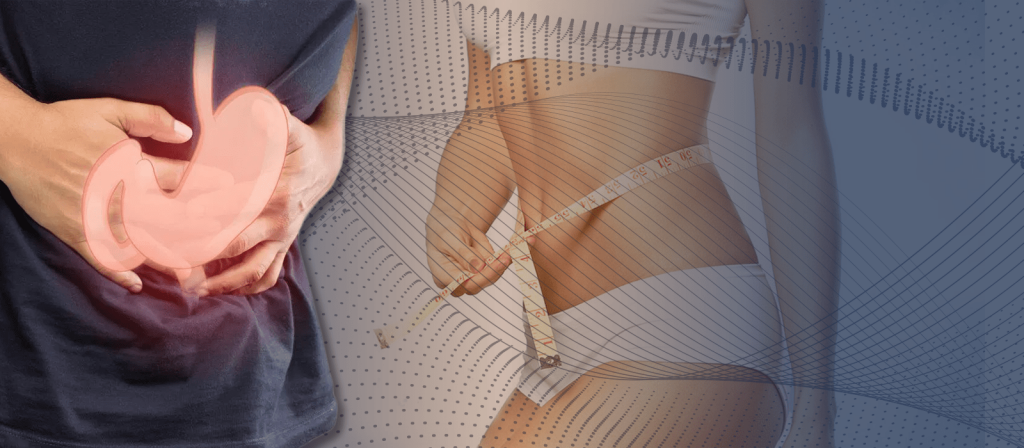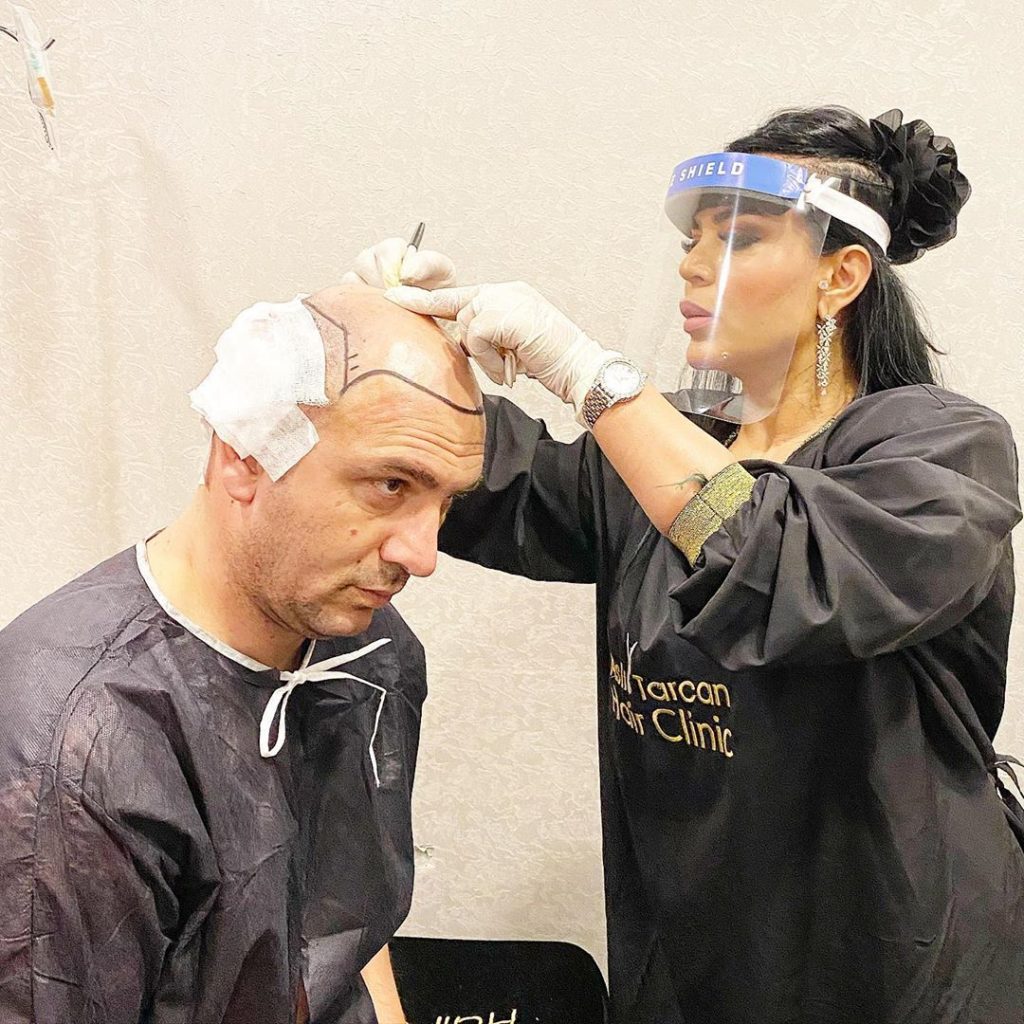
Gastric Botox Procedure Botox for your stomach, has been gaining popularity among patients who suffer from obesity but does not want to get involved in surgery and its risks.
So, what is this procedure exactly? How does Gastric Botox work? Who is it for? How it is carried out and what do you need to do before and after the procedure?
Contrary to what you might think, this is not exactly a new procedure. It is a procedure that has been used for many years to treat some gastrointestinal diseases such as “Achalasia”, “Gastroparesis” and “Anal Fissure”. The part which is new with the Gastric Botox is that it is newly used for the patients who suffer from obesity. It might be considered new, in that it is a method for weight loss based on the endoscopic injections of Botulinum toxin into the certain parts of the stomach.
Gastric Botox, commonly known as Stomach Botox, is a procedure that does not require surgery and is usually performed using endoscopy. Surgeons aim for a decrease in appetite by limiting the contraction of the muscles in the stomach. When injected to the stomach muscles, it causes fewer muscles to contract; thus, leading to an increase in the speed of weight loss. The main aim of this is to help the patient feel full for a longer time so that the food intake is in control.
The procedure is carried out by injecting Type A Botulinum toxin to the stomach wall via gastroscopy, which is a technique used to view the insides of the stomach and parts of the small bowel. After the examination of the stomach, Botulinum toxin is injected to the antrum, corpus and fundus of the stomach using a gastroscopic needle. This toxin causes the electrical current in the nerves to stop and this prevents the muscle contraction for 4 to 6 months. The whole procedure takes 15 to 20 minutes and patients may return to their daily life right after a 20 minute rest.
Within the three or four days after the procedure, your stomach movements and stomach emptying are slowed, therefore, a decrease in appetite is observed. The reason of this decrease in appetite is that Botox effects the levels of a hormone called ghreline, which is secreted from the fundus. Since you will start feeling full for longer periods of time, your intervals between meals will extend. During this period it is best to stick tight to the instructions of a nutrition expert in order to stay healthy during weight loss.
Patients should keep in mind that Gastric Botox procedure is not a main bariatric surgery and it alone cannot help them lose weight. It should rather be considered as a helper technique for weight loss, it will help decrease your appetite and follow your diet but some life style changes are a must in order to achieve desired results. They also should keep in mind that the effects of the Gastric Botox injection will go away in four to six months, so it is important for them to get used to a healthy diet and regular exercise in this period.
Gastric Botox, just like any other method, cannot promise you weight loss. It does have a reducing effect on the appetite, but the patients cannot rely solely on this. It is highly likely that it will fail on patients who consume high amounts of carbohydrate.
How Does The Gastric Botox Injection Work?
Botulinum toxin, commonly known as Botox, is a toxic product of a bacterium called Clostridium Botulinum. This toxin causes a temporary paralysis on the applied muscles by inhibiting the neural


signaling from the nerve ending to the tissue. When injected, Botulinum toxin enters to the nerve cell from its end, which is called neuromuscular junction; this is the place where the nerve and the muscle are conjunct. It reaches the nerve cell and prevents it from releasing a substance called Acetylcholine, which is the neural substance responsible for contractions in the muscle. When this substance is not released, muscle movements are inhibited and this leads to a prevention of the contraction of the muscles for about 4 to 6 months. This method is not very different from the facial Botox applied for aesthetics. The substance in both methods is the same, which is Botulinum Toxin. However, Gastric Botox involves a much higher dosage, since the stomach surface is much wider. The planned paralysis caused by the toxin decreases the wrinkles when applied to the face and stomach movements when applied to the stomach muscles. These stomach movements work to push the gastric ingredients into the small intestines; this is where the real food absorption happens. Therefore, when the stomach movements decrease and the food stays in the stomach for a longer time the food you consume will be digested slower. This will lead to a longer feeling of satiety, less appetite and less calorie intake.
Another effect of the Gastric Botox that has been reported is on the levels of a hormone called ghrelin. This hormone is normally produced by the stomach and it tells the brain that you are hungry. When the Botox is applied and the signaling of the ghrelin hormone is inhibited the brain does not know that you are hungry; therefore, you have a lower appetite.
Who Is Suitable For The Gastric Botox Injection And Who Is Not?
Of course, Stomach Botox Injection is not suitable for all patients who suffer from obesity. For example, this procedure is not suitable for patients who suffer from a significant increase in their weight. However, it is considered suitable for patients who suffer from some excess weight or patients who have trouble in appetite control, provided that they have tried to make life style changes but have not received any response.
These people who are overweight but are not able to achieve weight loss by exercising might prefer Gastric Botox Injection. Individuals who have a Body Mass Index (BMI) between 27 and 40 are especially suitable for this procedure. These people have excess weight between 10 to 15 kilos.
Also there are some other situations that you will not be recommended to have Gastric Botox Injection. For example, if you have a history of a gastric sleeve or gastric bypass, you will not be allowed to have this procedure. It also is not recommended if you are pregnant or brestfeeding.
What Happens During The Process Of Gastric Botox Injection?
As mentioned before, Gastric Botox Injection is not a surgical operation. It is carried out as an oral procedure using endoscopic application. The whole process takes about 20 to 30 minutes.
Right before the procedure, the surgeon might apply an oral spray in order to avoid any discomfort to the patient. Then, they will continue to insert a long, thin tube from the patient’s mouth down into the stomach called laparoscope, which has a light and a camera at the front. As this tube moves along, it will send images to a video monitor. Also, at the end of this tube there will be a needle filled with Botulinum toxin. When the laparoscopy is in the stomach, the surgeon will start injecting the Botulinum toxin into specific points of the stomach wall in measured proportions according to the patient’s needs.
Moreover, Botulinum toxin is also injected to block the central nerve of the patient’s stomach. This part controls the feelings of satiety and hunger and lets the brain know when you are hungry. When this part is blocked the patient will feel full more quickly and for a longer period of time.
The Gastric Botox Injection is an outpatient procedure, which means that the patients are not required to stay at the hospital. Usually 1 or 2 hours of observation is sufficient after the 20 to 30 minute procedure and then, they are allowed to go home and continue their daily routine for the rest of the day. A majority of the patients return to their work the next day.
There is no possibility of a permanent damage and effects of Gastric Botox Injection will last 4 to 6 months. If you do not lose the overweight in this period of time, you may need to repeat the procedure. It can be repeated after the six time period is over.
It is reported that the patients are able to lose 10 to 15% of their total weight between 3 to 6 months. Of course, the process varies among individuals according to their age, metabolism and amount of exercise. Considering the reported studies, three sessions of Botox injection are enough to achieve full potential.
Patients must remember to commit to a healthy diet and life style that involves regular exercise in order to make sure that they get the best out of this procedure and weight loss.
Before The Gastric Botox Procedure
Before the Gastric Botox procedure, your doctor will make some physical examinations, ask for some laboratory tests and also make a stomach endoscopy in order to ensure that there is no circumstances that will prevent you from having the procedure. They will want to know about your medical history, so it is highly important that you give enough and correct information on your medical problems, previous surgeries and medication that you used. Then they will continue to explain to you the risks and complications that may occur. If they decide that you are suitable for Gastric Botox, the doctor will give you some instructions on what to do while preparing for the procedure. These instructions may require refraining from food and beverages for the 12 hours before the procedure, stopping using some medications such as aspirin and antacids one day before in order to avoid bleeding,
Keep in mind that it is best for you to work with a professional plastic surgeon that you trust to make sure there are no medical mistakes and to get best results from the procedure.
What Will You Experience After The Procedure?
After Gastric Botox procedure, it is possible that you will experience some discomfort in your throat, which is totally normal since it might be due to the endoscope insertion from the mouth and through your throat. You may also feel a little tired, fatigued or disturbed for a couple of days. These effects will fade away gradually and as mentioned before you may return to your daily routines the next day of the procedure.
Your surgeon will probably ask you not to eat or drink anything for a few hours after the Gastric Botox procedure, until the effects of the oral spray completely pass and you feel normal in your throat again. Then, you will be started on a liquid diet for a few days, after that you will be able to return to your normal diet with the exception of pasta and sweets.
What To Eat After The Gastric Botox Injection?
Injections to the stomach are carried out with a very tiny needle applied through the endoscope and even though this is not a surgical operation, it may still cause some minimal trauma to the stomach wall. Therefore, a fluid diet is recommended following the first 3 days after Gastric Botox procedure, this way the stomach wall is able to heal. During this time, your diet will be composed of water, yogurt, proteinated soups, fresh fruit juices and so. After this period, you should pass on to solid food as fast as possible. Because the main effect of the procedure is to decrease the muscle movements to make food stay longer in the stomach and in order to see the benefits of the procedure, solid food is the best since it cannot leave the stomach without muscle movements.
After all this, your diet will have general rules as any healthy diet. It is recommended to consume high protein food, high fiber food and food that is low in carbohydrates. It is usually advised patients to quit all refined sugars including sweets and chocolate. It may sound scary and hard to achieve but it will definitely be easier than you think thanks to the decreased appetite and longer satiety caused by the Gastric Botox procedure.


